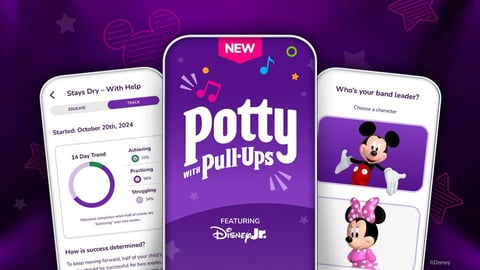CPGs Can Look to Mobile Advertising Amid Ongoing Supply Chain Disruptions
There were plenty of challenges and shifts that have shaped the way CPG brands reached their shoppers in 2021. As CPG brands plan their 2022, supply chain disruptions will continue to be an obstacle that will affect their ability to consistently keep products on the shelves. What’s more, CPGs will also have to deal with managing shoppers’ expectations as product availability and pricing fluctuates across all categories.
These multiple shifts in the market are testing consumers’ loyalty and forcing CPGs to analyze and adjust how they market to their target audiences. Unfortunately, many advertising methods are too rigid to account for these changes.
Additionally, shoppers continue to migrate away from the physical store toward mobile and eCommerce, making it increasingly difficult to break through the noise to attract and convert shoppers at the right time. Moving forward, CPG advertisers will need to search for more effective ways to respond to 2022’s landscape and see winning results.
Transparently Communicating with Consumers via Advertising
Given the current supply chain crisis, items going out-of-stock will be inevitable for most brands. To succeed, companies should maintain some form of advertising presence while shifting to tactics that make sense for their individual realities.
[See also: CGT Sales & Marketing Report]
For example, brands must consider alternative messages to send to consumers who will not be able to find them on-shelf. Brands should communicate which items are out-of-stock and provide recommendations for alternative product lines. Transparency goes a long way with consumers and helps to keep them from getting frustrated.
Using Mobile Advertising to Navigate Ongoing Supply Chain Fluctuations
While mobile advertising has other benefits, it stands out as a stellar option for managing moments when brands don’t have enough product available. Advertisers that have access to out-of-stock feeds can quickly adjust their mobile spend to geo-target ads in conjunction with availability to ensure that consumers are not targeted with promotions for items that they would not be able to find at local retailers.
Additionally, if a brand finds itself in a position where its competition has out-of-stock challenges, this is a prime opportunity to target those category shoppers and ramp up on advertising. A competitor vacating shelf space will force consumers to seek other options and introduce a unique opportunity for advertisers to encourage trial and purchase among new audiences. Ultimately, the goal should be to convert these competitive shoppers.
For advertisers that are confident that their products will be in-stock, now is a better time than ever to engage consumers while they plan and shop. One great way to do this is via mobile. Marketers should seek to drive shoppers to add promoted products to their digital grocery lists so that they are reminded to pick them up at the shelf.
Further Connecting with Consumers Via Shopping List Marketing
With ongoing supply chain disruptions, CPGs will be starting the year by evaluating which advertising options provide the most agility in brand messaging, creative and budgeting. Shopping list marketing helps solve some of these challenges as nearly 50% of shoppers create shopping lists via their mobile devices, and 81% of shoppers report that they buy every item they put on their lists.
As such, brands of all sizes can harness the power of shopping list marketing to get their available products onto consumers’ shopping lists, influencing the pre-shop, in-store and online shopper experience.
The Power of Mobile Advertising and Shopping List Marketing in 2022
By leveraging additional advertising tactics in 2022, such as mobile advertising and shopping list marketing, CPGs can work to reach the right shoppers, in the right place, at the right time and uncover which products are seeing significant popularity increases versus decreases against ongoing fluctuations.
As supply chain disruptions are set to continue, CPGs can leverage these tactics to get a real-time read on purchase intent and accurate predictor of in-store sales, answer questions about how product categories are changing, optimize marketing, and adjust budgets to be more targeted and efficient against ongoing change.
Molly McFarland is co-founder and chief revenue officer of AdAdapted.





